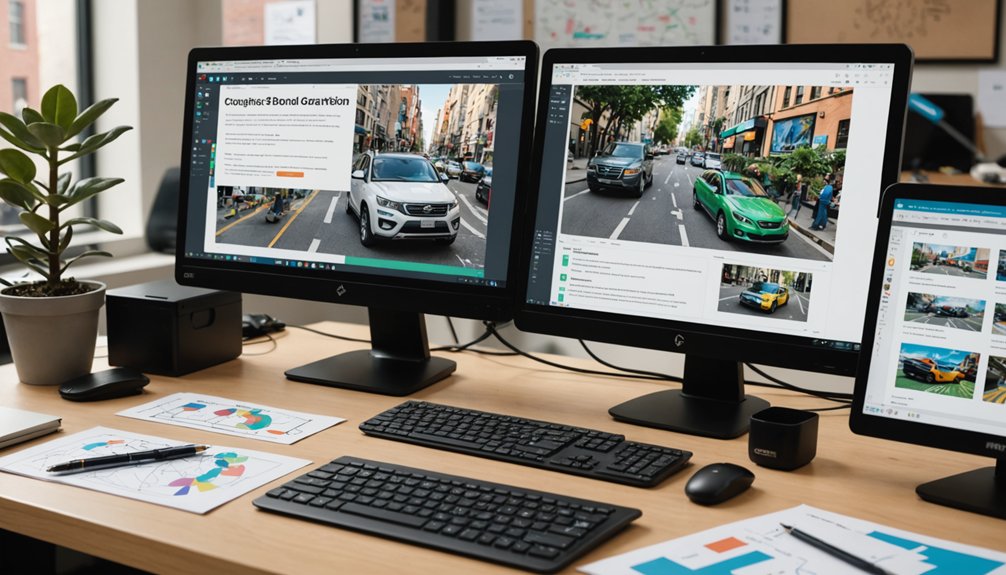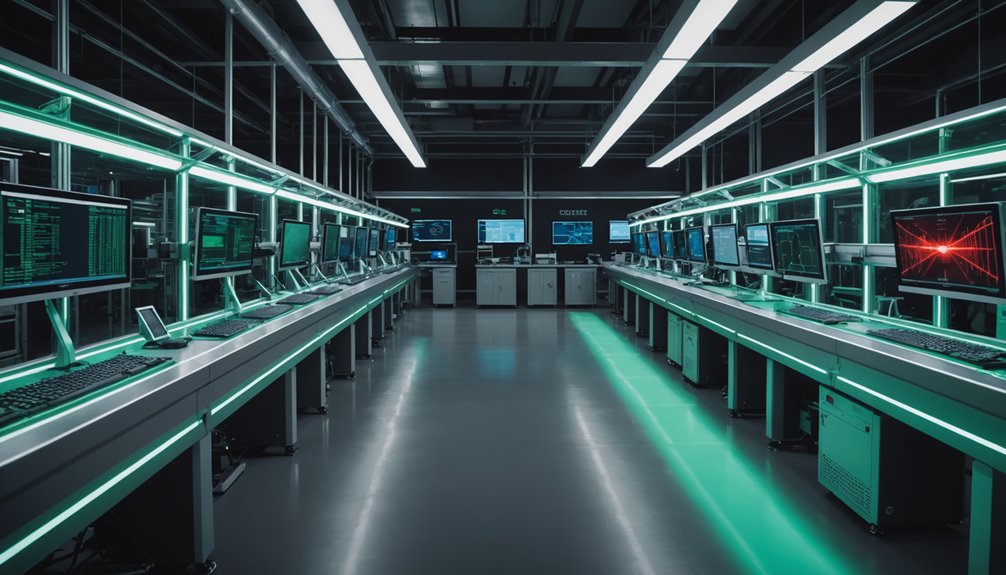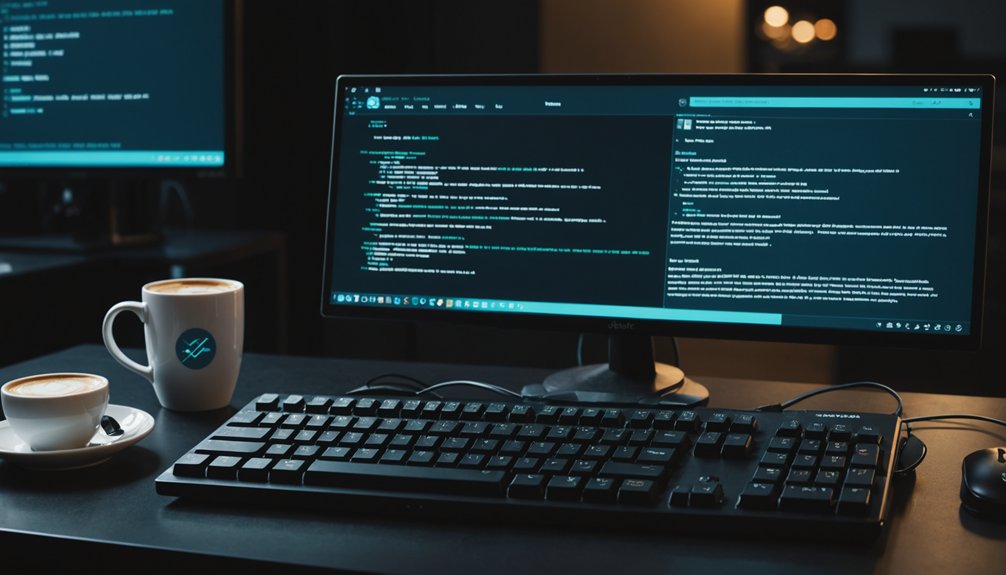Image labeling demands precision. Proper annotation means tight bounding boxes around objects, consistent terminology, and labeling even partially visible items. Poor labels create garbage models with real-world consequences—missed pedestrians or undetected tumors. Tools like Label Studio and Roboflow help automate the tedious process. Don't skimp on quality; lighting variations and ambiguous images complicate things. The difference between mediocre and excellent computer vision systems often lies in those meticulous annotation details.

Imagine teaching a computer to see the world as humans do. It's no small feat. Computers don't naturally understand images the way we do. They need guidance. Lots of it. This is where image labeling comes in—the painstaking process of annotating objects in photos so machines can learn to identify them.
The concept is simple enough: draw boxes around objects, tag them with labels, repeat thousands of times. But the devil's in the details. Sloppy labeling creates sloppy AI models. Garbage in, garbage out. It's that straightforward. Model training phase requires clean, properly formatted data to achieve optimal results.
Proper labeling starts with good data collection. You need diverse, relevant images. Then comes the actual labeling—adding bounding boxes or segmentation masks to highlight objects of interest. Every. Single. Object. No cutting corners. Z-score standardization of image data ensures all features contribute equally to model training.
Consistency matters more than most people realize. If you label a car as "automobile" in one image and "vehicle" in another, you've just confused your model. Nice job.
Tight bounding boxes are essential. Think of them as digital hugs—snug but not suffocating. Don't cut off parts of the object, but don't leave excessive space either. And yes, you should label objects even when they're partially hidden. The computer needs to learn that half a dog is still a dog.
The challenges are numerous. Some images are ambiguous. Lighting varies. Angles change. And doing this at scale? Good luck. That's why automation tools like Label Studio and DagsHub Data Engine exist, implementing techniques like semi-supervised and active learning to ease the burden. Advanced tools like Roboflow offer Smart Polygon annotation features that significantly reduce the number of clicks required for complex object labeling.
The stakes are high. Poor labeling can cause autonomous vehicles to miss pedestrians or medical diagnostic systems to overlook tumors. Real consequences. Real lives.
The process isn't sexy, but it's critical. Accurate labels mean better models. Better models mean functional AI systems. For semantic segmentation tasks, ensuring unique label values for different classes is crucial to effectively train algorithms like U-Net and Mask R-CNN. And in a world increasingly reliant on computer vision, from retail to healthcare to transportation, getting this fundamental step right isn't optional—it's essential.
Frequently Asked Questions
How Many Images Are Sufficient for a Reliable Training Dataset?
Dataset size isn't one-size-fits-all. General rule: 1000 images per class for basic tasks.
Complex projects? You'll need more. Pre-trained models can get away with less, thanks to their existing knowledge.
Task complexity matters too – object detection demands larger datasets than simple classification. Data augmentation helps stretch what you've got.
Budget constraints? Start small, track performance, then scale up. No shortcuts for reliable results.
Can I Automate the Image Labeling Process?
Yes, image labeling can be automated. Several tools exist for this. Roboflow Auto Label uses pre-trained models to speed up the process.
The Autodistill Framework combines foundation models like Grounding DINO for efficient labeling. Even Label Studio offers templates to streamline annotation.
Not perfect though. Automated systems require calibration and quality checks. They struggle with edge cases.
But for large datasets? Huge time-saver. The tech keeps improving—computational demands are dropping, accuracy's rising.
What's the Best Annotation Tool for Medical Imaging Applications?
Medical imaging annotation tools vary widely based on specific needs.
For general use, 3D Slicer and ITK-Snap dominate the open-source space. They're robust. Free.
HOROS works great for Mac users, while OsiriX offers both free and paid versions.
Commercial options like Encord include AI assistance – handy but pricey.
The "best" tool? Depends entirely on your project requirements, compliance needs, and budget.
No one-size-fits-all solution exists.
How Do I Handle Occlusion When Labeling Objects?
When handling occlusion in object labeling, annotators should draw bounding boxes as if the object were fully visible. Overlapping boxes? Totally fine. The technique trains models to recognize partially hidden objects in real-world scenarios.
Data augmentation methods like Random Erase, Cutout, and CutMix deliberately simulate occlusion during training. Consistency is key—every object gets labeled, even the half-hidden ones.
Medical imaging particularly benefits from this approach. Those occluded tumors won't hide from your model.
Should Image Labels Include Attributes Like Color or Condition?
Including attributes like color and condition in image labels is often vital. Not just extra fluff. These details help models differentiate between similar-shaped objects with different characteristics.
Essential for tasks where color matters – like identifying ripe fruit or specific product variations. Too many attributes? That's a burden. But relevant ones improve accuracy markedly.
Models trained with detailed attributes generalize better across different scenarios. Balance is key. Don't overdo it.




